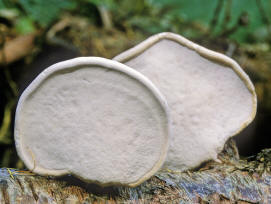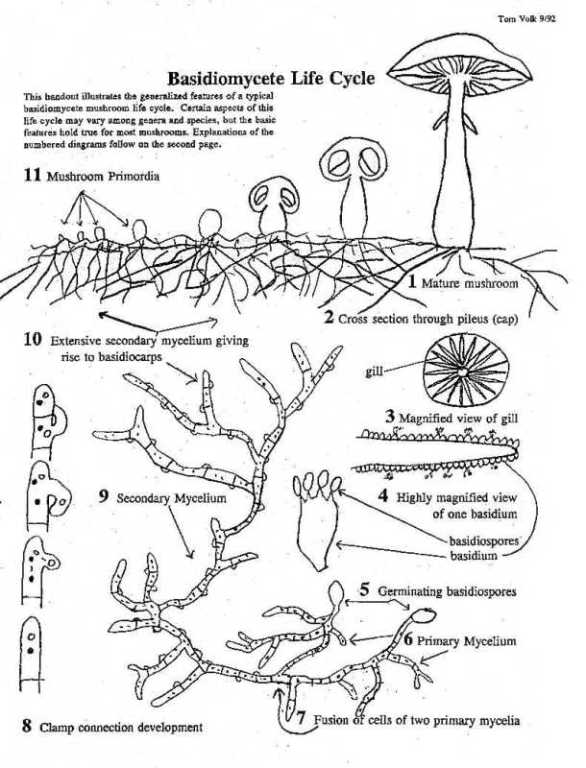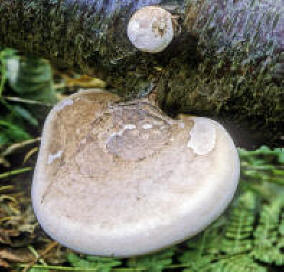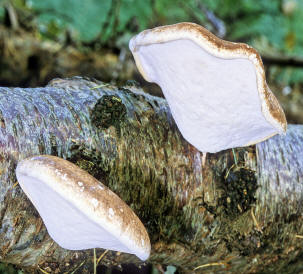Reproduction
 Pores
of Piptoporus Photo by Michael Wood
Pores
of Piptoporus Photo by Michael Wood
Piptoporus betulinus produces a white spore print with cylindrical basidiospores that aim to land on an injured area of a birch tree or land on an exposed portion of dead birch where it begins dividing and creating a new network of mycelium which invade the host tree and begin eating the wood and cause a brown cuticle rot.
 Diagram
of Basidiomycete Life Style by Tom Volk
Diagram
of Basidiomycete Life Style by Tom Volk
To break down the diagram and the reproductive life cycle. First off, two haploid mycelia (one set of chromosomes each), one male and one female undergo plasmogamy which is the fusion of cytoplasm of the cells.
After plasmogamy comes a dikaryotic mycelium which grows and takes over as much surface area as it can. Once there is a certain environmental stimuli present, the mycelium will for a fruiting body in the form of a bracket or conk. This structure possess tiny pores on the bottom which contain dikaryotic cells known as basidia.
These basidia undergo karyogamy, fusing their nucleus's together to form a diploid nuclei that goes through meiosis to form four haploid cells.
Each of these four haploid cells will form into a basidiospore which remains stationary until the appropriate time to be ejected out of the pores in hopes to land on the perfect medium to continue the process and start the cycle all over again.
Home
Back to Distribution
Check Out Interactions

 Photos
By Michael Wood
Photos
By Michael Wood